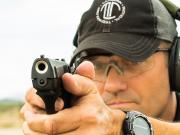While clearing out my range bag this weekend I came across my notes for Ernest Langdon’s two day Advanced Pistol class. Arclight had recently chided me about not posting an AAR for this class, so I decided to review my notes and knock this out. So this isn’t the most timely AAR, but better late than never…thanks to Arclight for providing his pictures and proofing a draft. This is as much his AAR as it is mine. If any of my recollections are off, I welcome feedback from other students.
I felt remiss that I hadn’t posted a review of Ernest’s class, as I consider it one of the best and most challenging training experiences I’ve had to date. This is an Advanced class in every sense of the word – my skills were pushed hard. We practiced drills and skills that many of us never had the chance to try before. The pinnacle event for this course is shooting moving targets while on the move. Each training segment builds your skills toward this final event – core fundamentals, shooting on the move, shooting moving targets and then finally putting it all together.
The class started in the classroom, and Ernest started off with about a 90-minute presentation. He covered his background as a military instructor with the USMC High Risk Personnel Course, his industry experience with SIG and Smith & Wesson, and his competitive background. Langdon is the very definition of a subject matter expert – few instructors combine this level of military, industry and competition experience. It was interesting to hear about his initial forays into competition and how he endeavored to bring some competitive innovations back into the military community. He covered combat mindset, situational awareness (Cooper colors), his training influences and philosophy, the state of the firearms industry, and then the fundamentals of pistol shooting (grip, stance, trigger squeeze, sight picture).
Then it was out to the range.
The class was relatively small – nine students. About half were active or former military, with every service except the Air Force represented. Every student had attended professional training before (with several Aim Fast Hit Fast alumni represented) and most had competitive experience as well. Without exception, each student was ‘switched on’.
Five students used Glocks, three used the Smith and Wesson M&P, and there was a single SIG. Ernest used a M&P for his demonstrations during the course. I don’t recall any equipment problems. I used my Glock 34 with Warren Sights (‘straight eight’ night sights) and a Raven Concealment Systems Phantom OWB Holster. We shot over 1000 rounds each over the two days.
For targets, we mostly used cardboard IDPA/IPSC targets with a repair overlay that was applied with spray glue, as well as steel. I was skeptical about the glue, but it worked great and was very efficient.
TD1 started with the fundamentals. This was as much a chance for us to warm up and get dialed in as it was for Ernest to see what he had to work with. We worked on our trigger press and accuracy. Then we moved to the draw and the ‘press out’. We also practiced reloads and one handed manipulations. We quickly moved onto more advanced skills.
We worked on multiple targets at varying distances – we’d hammer the close target IPSC sized and then slow down for that precise shot on a smaller, distant steel plate. This reflected Ernest's emphasis on 'full spectrum trigger control'. This was also easier said than done.
Transitioning between multiple targets at different ranges.
But most of our time was spent shooting on the move. We practiced shooting while advancing and shooting while retreating. We moved laterally and diagonally. We moved between cover positions, engaging targets on the way. We snaked around obstacles, engaging targets while moving out to the strong side and weak side. We started at contact distance and then pushed away from the target, shooting while rapidly retreating.
Lateral movements.
TD2 introduced the movers. Some of us had engaged moving targets before in competition, and some had not. We first worked on ‘swingers’. Ernest talked about the merits of the ‘ambush/trapping’ and ‘tracking’ schools, encouraging us to try both and see what worked. I first tried ambushing the targets, but eventually found myself tracking the targets and getting better results.
We then moved on to lateral movers, with Ernest setting up a portable moving target system. The small class size was a real advantage here, as we could only cycle two shooters at a time against the lateral movers. Everyone was serious about training, and we moved through with a purpose.
Laterally moving targets.
Then it was time to put it all together – engaging moving targets while moving. This was the pinnacle event for several reasons – obviously combining several of the skills we had worked on. But Ernest sums up the real world application of this skillset succinctly – “Nobody is going to stand still in a gunfight.” He noted that 'Proximity negates skill' - your ability to create distance from an opponent will favor your training in a gunfight - even an untrained adversary can hit a close, stationary target. Our ability to score effective hits while moving would enhance our ability to fight and win.
Shooting swingers on the move.
We first practiced moving against the swinging targets, advancing and retreating, building our confidence. But the real challenge was the lateral mover. We practiced advancing, retreating and diagonal moves. There was a lot to think about to pull this off effectively.
But perhaps the biggest surprise of the course was seeing our targets. We were getting good hits. No, not every shot fired was clustered in the ‘A’ zone, but we were laying effective fire on a rapidly moving target while moving ourselves. I know I left this particular set of drills as a more confident shooter.
TD2 then closed with some competitions. We ran through ‘El Presidente’. Ernest set up a drill from one of his championship matches – facing three targets at three yards, draw and fire two rounds on each (in tactical order) followed by a head shot on each. This was fun and challenging, favoring the shooter who drove the pistol aggressively after each shot. (I suffered my only malfunction of the course on this last drill, as some Wolf 9mm failed to fire. Hey, quality ammo was scarce and pricey in 2010!)
Our last competition was a walk back drill. The target was an eight inch steel plate. I think I checked out somewhere after the 50 yard mark. The two finalists were lobbing their shots in from the parking lot before Ernest declared a victor.
Walk-back finalists. The target is an eight inch disc towards the right edge of the picture.
If you have the opportunity, I highly recommend training with Ernest Langdon. His class draws from his entire background. He is professional, but easygoing and very approachable. During the breaks he answered questions on tactics, gear, competition and the industry. His family brought out lunch for the students, a really nice touch that also kept us at the range and on schedule.
The class was interesting, challenging and fun. I plan on training with him again in the future.


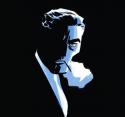
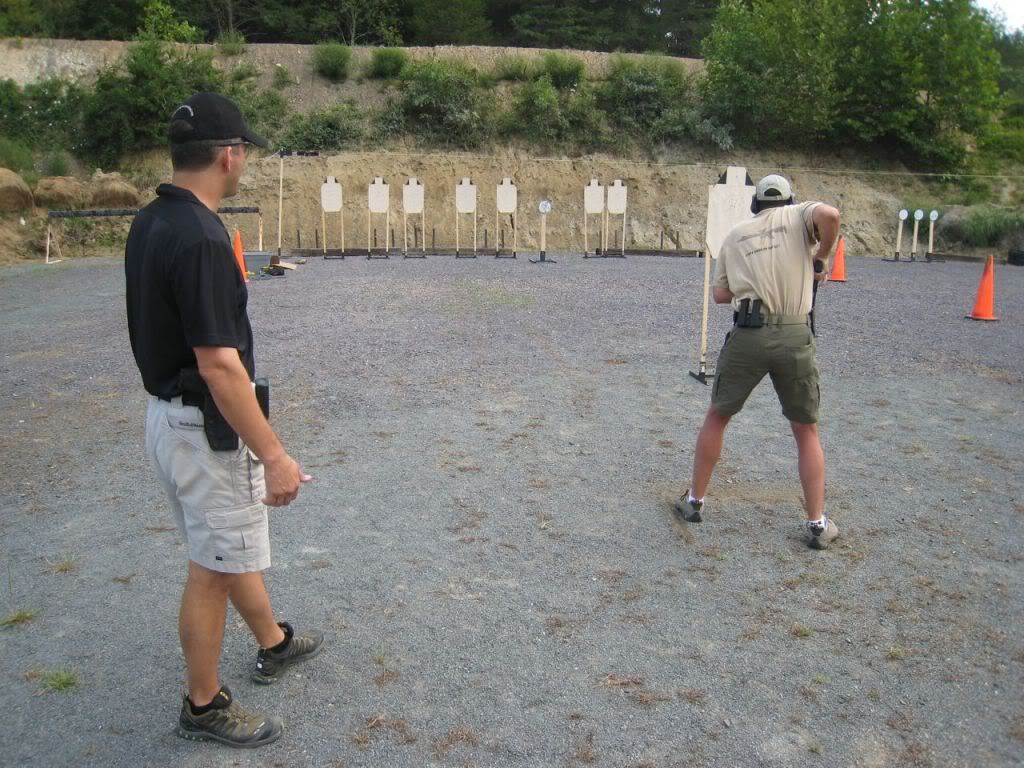
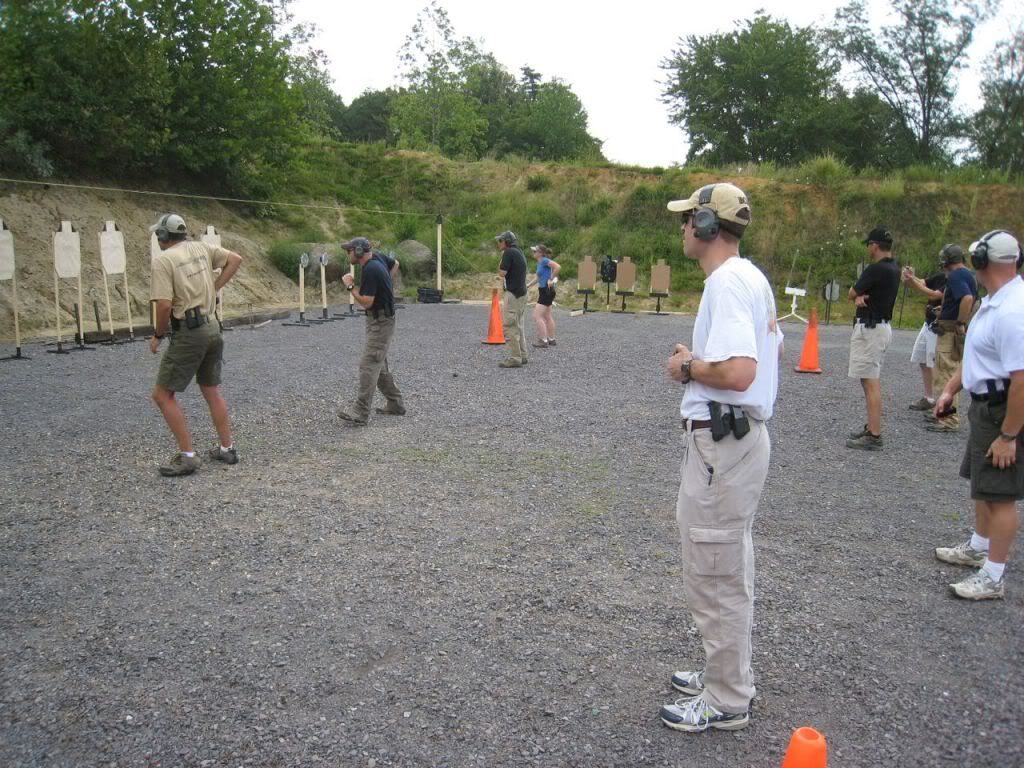
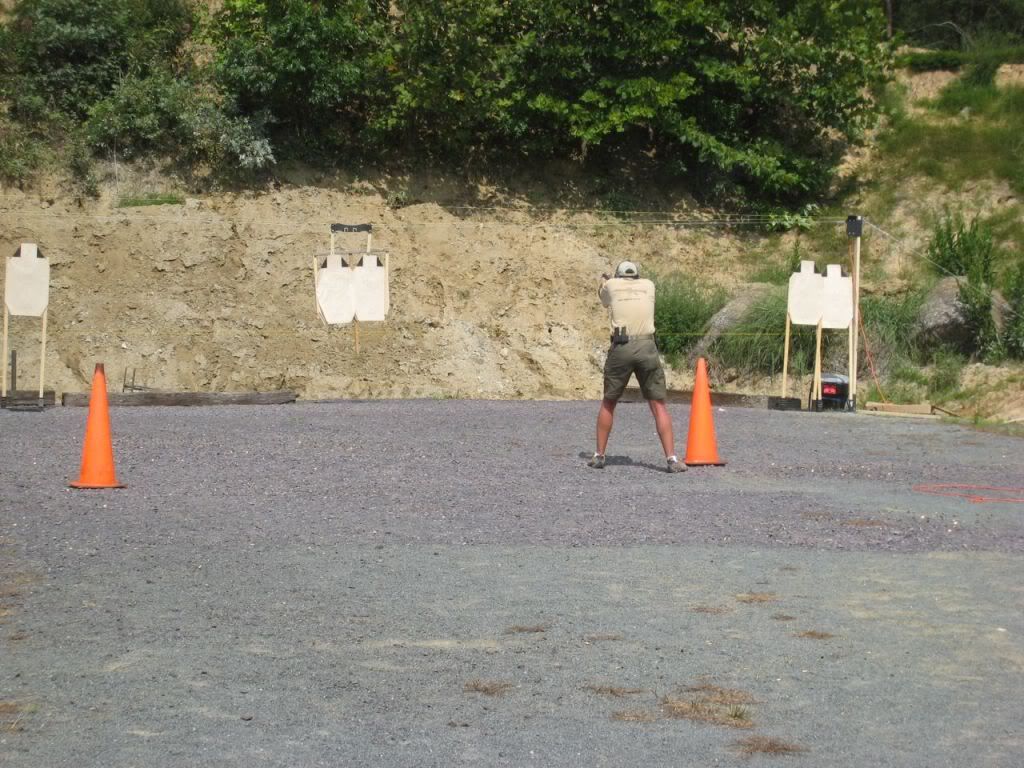
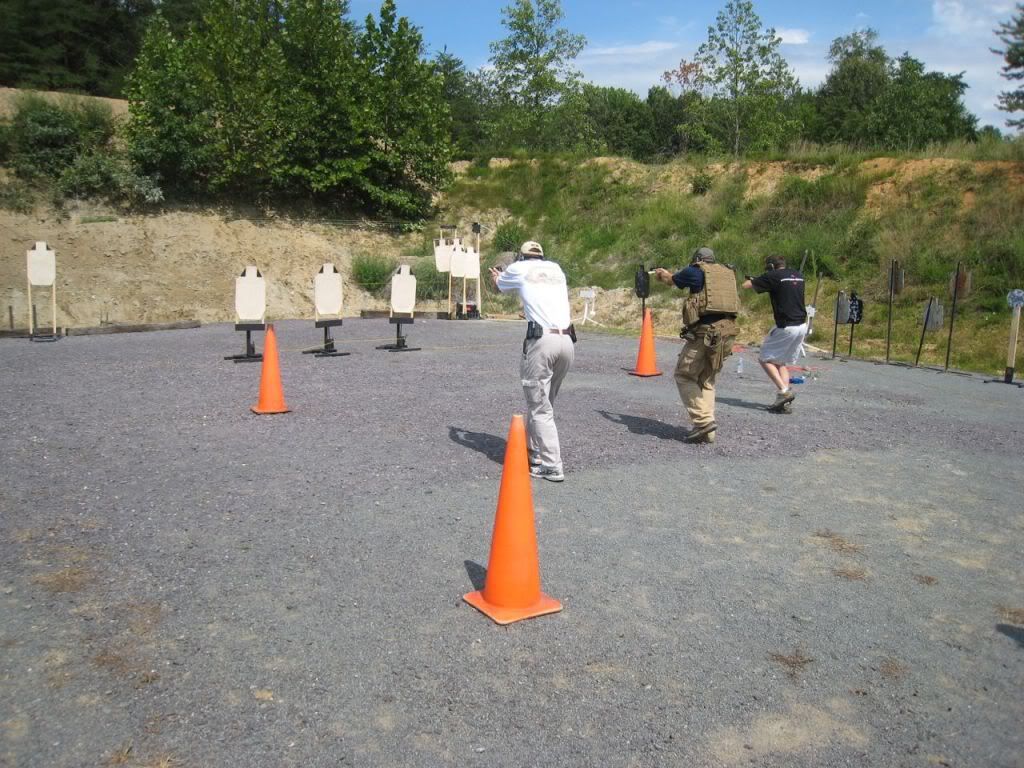
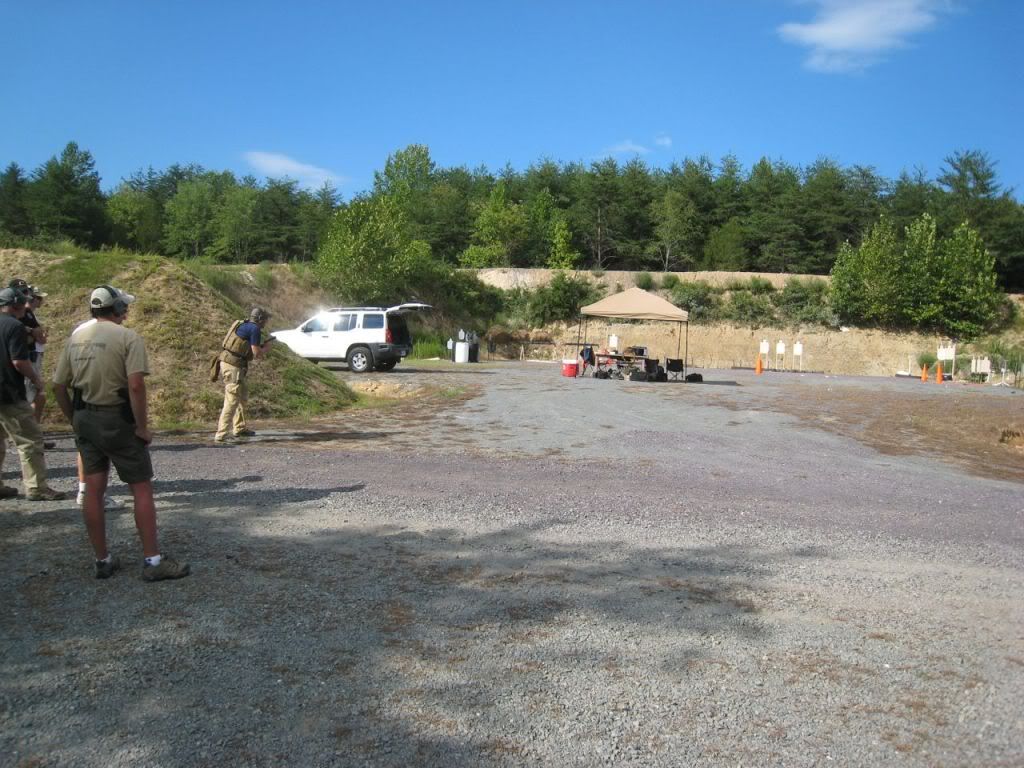

 Reply With Quote
Reply With Quote

